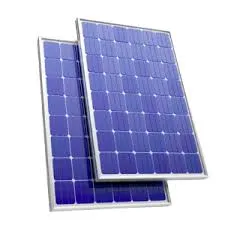solar panel measurements
Understanding Solar Panel Measurements A Key to Efficient Energy Production
Solar energy has emerged as one of the leading renewable energy sources worldwide, providing a sustainable alternative to fossil fuels. As the demand for solar panels continues to grow, understanding the measurements and specifications associated with these devices is critical for homeowners and businesses looking to invest in solar technology.
At the core of solar panel measurements are three main metrics efficiency, wattage, and dimensions
. Each of these factors plays a significant role in determining the overall effectiveness and suitability of a solar panel for specific applications.Efficiency
Solar panel efficiency refers to the percentage of sunlight that is converted into usable electricity. High-efficiency panels can produce more energy in a smaller space, making them particularly valuable in urban settings or for residential installations where roof space may be limited. Modern solar panels typically have efficiencies ranging from 15% to over 22%. When evaluating efficiency, it is essential to consider the type of solar technology used, such as monocrystalline, polycrystalline, or thin-film solar cells.
Monocrystalline panels, known for their high efficiency and sleek design, rank at the top, while polycrystalline panels offer a more cost-effective solution but at slightly lower efficiency rates. Thin-film panels, while the least efficient, present a lightweight and flexible option that can be useful in specific applications, such as building-integrated photovoltaics.
Wattage
solar panel measurements

Wattage, often denoted as watts peak (Wp), represents the maximum power output of a solar panel under standard testing conditions. This measurement is crucial for assessing how much energy a solar panel can produce, aiding consumers in determining the number of panels needed to meet their energy demands. A typical residential solar panel ranges from 250 to 400 watts per panel. When planning a solar power system, it’s important to calculate the total wattage required to offset electricity consumption and to ensure that the size of the solar array can adequately meet those needs.
Dimensions
The physical size and dimensions of solar panels also play a significant role in installation. Most residential solar panels measure around 65 inches by 39 inches. However, the choice of panel size can affect installation logistics, including the mounting structure, space on the roof, and orientation for optimal sun exposure. Larger panels may produce more energy, but they could pose challenges if roof space is limited.
Other Considerations
Beyond these core measurements, additional factors such as temperature coefficient, warranty, lifespan, and cost should also be taken into account. The temperature coefficient indicates how well a solar panel performs as temperatures increase, while warranties and estimated lifespans of 25 years or more can provide insights into the long-term reliability of the investment.
In conclusion, understanding solar panel measurements is crucial for anyone considering a solar energy system. By evaluating efficiency, wattage, and dimensions, consumers can make informed decisions that maximize energy production and cost savings. As technology continues to evolve, staying informed about advancements in solar panel specifications will be vital for optimizing energy solutions. Investing in high-quality solar panels can lead to significant benefits, including reduced energy bills, increased property value, and a positive impact on the environment through the use of clean, renewable energy. Ultimately, the right solar panel measurements can pave the way for a brighter, more sustainable future.
-
Unlocking Energy Freedom with the Off Grid Solar InverterNewsJun.06,2025
-
Unlock More Solar Power with a High-Efficiency Bifacial Solar PanelNewsJun.06,2025
-
Power Your Future with High-Efficiency Monocrystalline Solar PanelsNewsJun.06,2025
-
Next-Gen Solar Power Starts with Micro Solar InvertersNewsJun.06,2025
-
Harnessing Peak Efficiency with the On Grid Solar InverterNewsJun.06,2025
-
Discover Unmatched Efficiency with the Latest String Solar InverterNewsJun.06,2025







